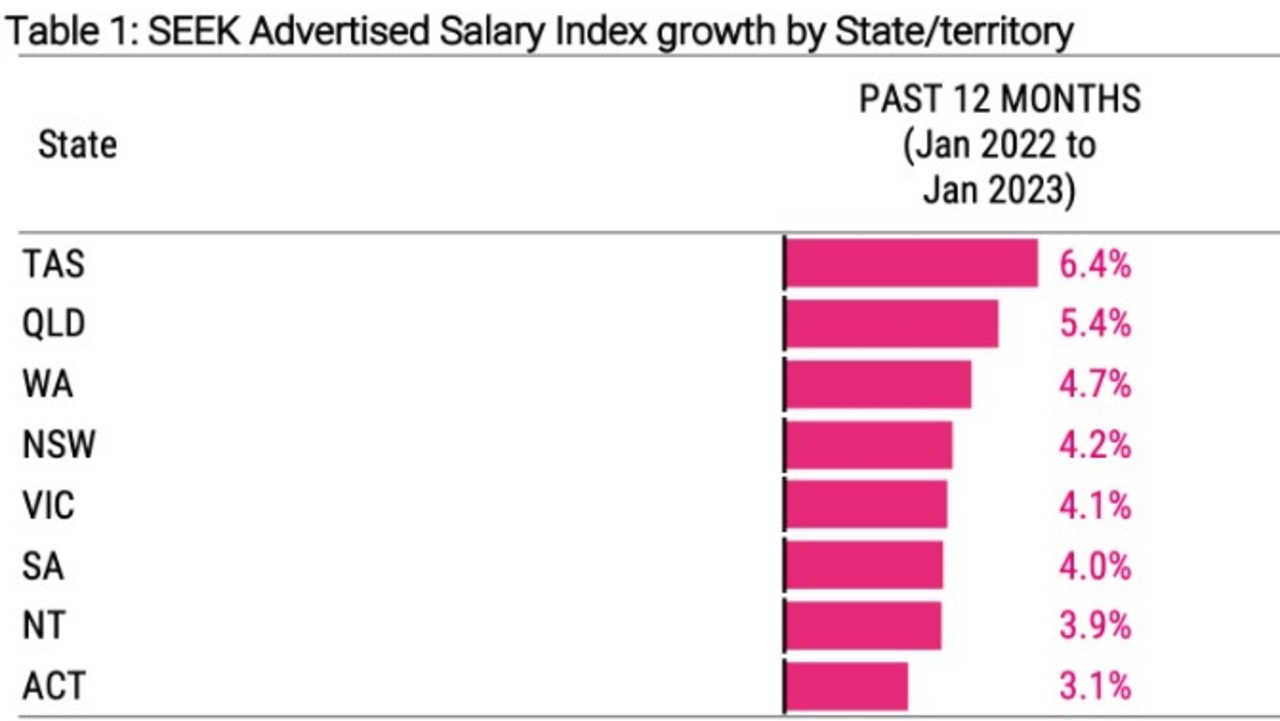Aussie workers receiving the strongest wage growth, according to SEEK
Some of Australia’s lowest paid workers have seen the biggest pay rise over the last year, according to the latest wage data.
Some of Australia’s lowest paid workers – hairdressers, butchers and waitresses – have seen the biggest pay rise over the last year, at a time when the cost of living crisis has started to bite.
According to the latest data by SEEK, advertised wage growth in trades and services have surged by a massive 6.3 per cent over the last year to January.

Senior Economist at SEEK Matt Cowgill said the wage increase for these workers coincided with the end of pandemic lockdowns.
“Since we started opening up just over a year and a bit we have seen demand for workers has been strongest in the lowest paid occupations – such as hospitality, transport,” he said.
“In some of those industries we are seeing a bidding war for candidates.”

Advertised salaries on average grew up to 4.4 per cent which Mr Cowgill described as “strong” but warned “there are signs we might have seen the peak”.
“The rate of month-on-month growth in advertised salaries has fallen for two consecutive months and was relatively anaemic 0.2 per cent in January,” he said.
“This moderation echoes some other labour market indicators, such as the unemployment rate and job ad volumes. However, the labour market is still very tight, just not as tight as it was a few months ago.”
Other industries experiencing significant pay increases include design and architecture (6.2 per cent) and manufacturing, transport and logistics workers (5.8 per cent).
“The disappointing thing is that all these industries are lagging behind inflation at 7.8 per cent, so wages are falling in real time,” he said.
The industries which have seen the smallest wage growth are in legal jobs (0.4 per cent), consulting (0.6 per cent) and science and technology (0.8 per cent).
Australia’s annual household inflation hit its highest level since the 1990s at 7.8 per cent in December, 2022 — the latest figures published.
Treasurer Jim Chalmers warned at the time inflation will remain “higher than we would like for longer than we’d like”, and would be the “defining challenge” in the economy in 2023 as it was in 2022”.
Advertised salary increases in a year
Trades, Services: 6.3 per cent
Design, Architecture: 6.2 per cent
Manufacturing, Transport, Logistics: 5.8 per cent
Insurance, Superannuation: 5.7 per cent
Administration, Office Support: 5.5 per cent
Government: 5.3 per cent
Accounting: 5.1 per cent
Retail: 4.9 per cent
Mining: 4.4 per cent
Engineering: 4.4 per cent
Real Estate: 4.4 per recent
Hospitality, Tourism: 4.2 per cent
Call Centre: 4.2 per cent
Banking, Financial Services: 4 per cent
Health Care, Medical: 3.8 per cent
Information Communications and Technology: 3.5 per cent
Advertising, Arts, media: 3.5 per cent
Community Services, Development: 3.2 per cent
Marketing, Communications: 2.9 per cent






